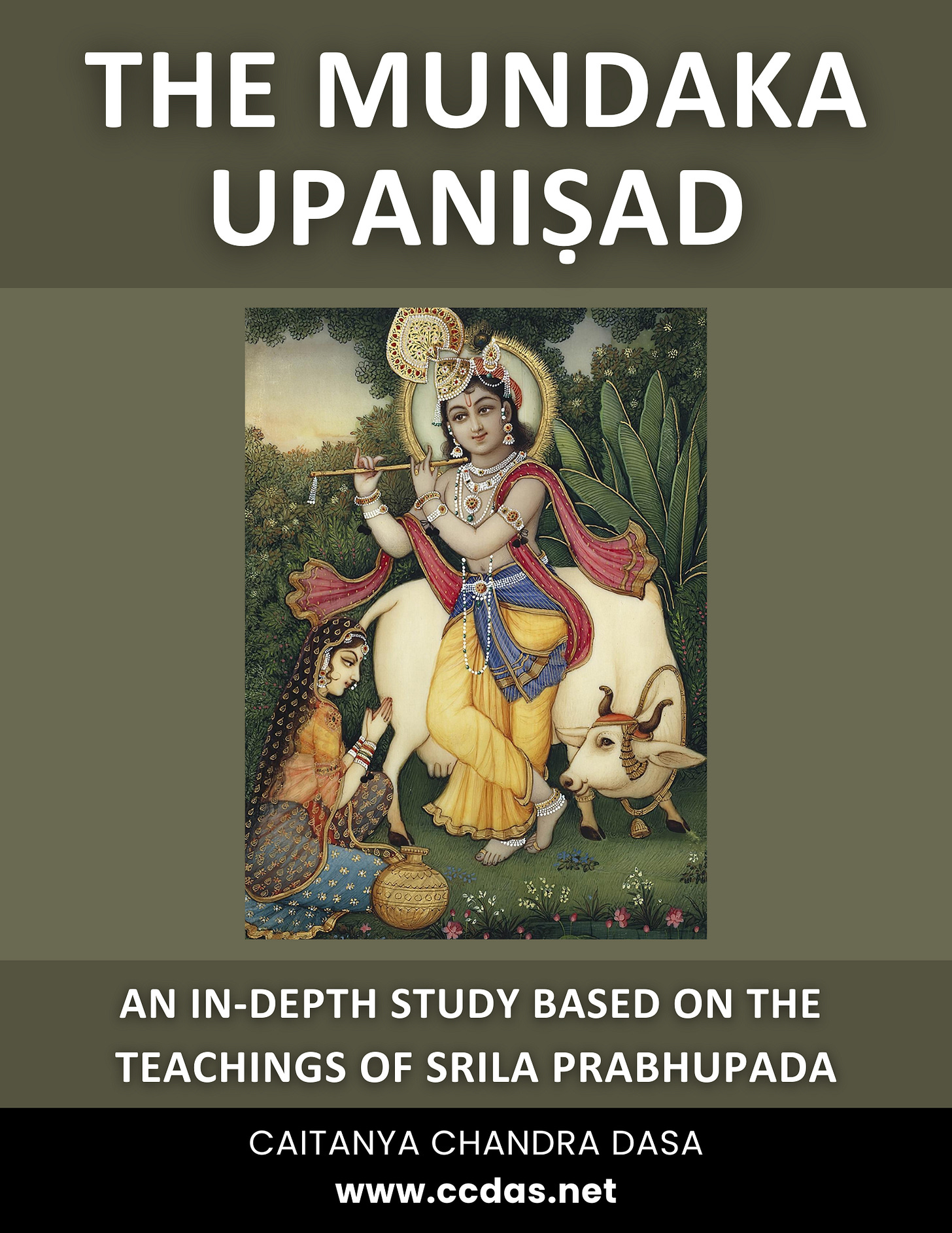The Muṇḍaka Upaniṣad: An in-depth study based on the teachings of Srila Prabhupada
The Muṇḍaka Upanisad describes a conversation between the sage Angirasa and Śaunaka Rsi, in the forest of Naimiṣāraṇya before the narration of the Srimad Bhagavatam by Sukadeva Goswami.
The Muṇḍaka Upanisad describes a conversation between the sage Angirasa and Śaunaka Rsi, the leader of the sages performing sacrifices in the forest of Naimiṣāraṇya. They started at the end of Dvapara-yuga and continued after the start of Kali-yuga. Although this great meeting of sages is commonly associated with the narration of the Srimad Bhagavatam by Sukadeva Goswami, it was also the stage for the narration of many other important scriptures.
This narration happened at some point before the narration of the Srimad Bhagavatam, and it is organized into three parts or muṇḍakas, each divided into two sections or khandas, making a total of six sections. Like in other Upanisads, the text uses poetic and metaphorical language to convey the teachings, making a literal translation practically unintelligible.
One of the topics described in the books is the distinction between two types of knowledge inside the Vedas: para-vidya (spiritual knowledge, describing the nature of the Supreme Lord, the soul, our eternal relationship with Him and the process of devotional service) and apara-vidya (lower knowledge about fruitive activities and other material subjects). Understanding the distinction between the two is essential in understanding the Vedas because the same verses can be understood at both levels according to one's level of qualification. When interpreted based on apara-vidya, the verses of the Vedas appear to describe fruitive activities, rituals, and different branches of material knowledge, but when the higher meaning, para-vidya, is revealed, one can see that the verses actually describe the Lord and the process of devotional service that allow us to attain Him.
This concept is essential to understanding the scriptures, because the same instructions acquire different meanings and the same actions lead to different results according to the mentality of the performer. This higher knowledge becomes accessible only when studied under the right conclusions.
The Muṇḍaka Upanisad is considered one of the cornerstones of the Advaita school. Śaṅkarācārya wrote an extensive commentary on it, which defined much of the basis of the Mayavada philosophy. Superficially, it indeed appears that many of the verses describe the impersonal aspect and impersonal liberation, but when we dive deep, we can see the verses actually describe the Supreme Lord in His personal aspect, the nature of the soul, and devotional service to Him as the supreme goal of life. In this way, this commentary is not just an explanation of the Muṇḍaka Upanisad according to the Vaishnava school, but also a refutation of the Mayavada interpretation.
Both Srila Ranga Ramanuja and Srila Madhvacarya wrote brief commentaries on the Muṇḍaka Upanisad, and Srila Baladeva Vidyabhusana explains the conclusions in his Govinda Bhasya. However, they are not easily understandable without the conclusions given by Srila Prabhupada in his books. It's only because Prabhupada explains the concepts discussed in the Upanisads in so much detail in his books that understanding the commentaries of the previous acaryas in their entirety becomes possible.
This is the second book in the series on the 11 main Upanisads I’m publishing. The first was the Taittirīya Upaniṣad, which is already available in full.
To receive the daily articles and the new books as they are published, subscribe to the updates by email. If you appreciate the work I’m doing and would like to support the work in the next books, you can consider becoming a paid subscriber and contributing with a small monthly donation. You can also donate in other ways using the button:
💬 Table of Contents
+ The conclusions of the Upaniṣads
The performance of Vedic sacrifices
Text 1.2.2
Text 1.2.3
Text 1.2.4
Text 1.2.5Repeated birth and death
Text 1.2.7
Text 1.2.8
Text 1.2.9
Text 1.2.10
+ Second Muṇḍaka - 1st Section
+ Second Muṇḍaka - 2nd Section
Achieving the ultimate goal of life
Text 2.2.3
Text 2.2.4
Text 2.2.5Cutting the knots inside the heart
Text 2.2.7
Text 2.2.8
Text 2.2.9-11
⬇️Download the PDF of the book
Subscribe for free to receive new posts by email. If you are already a subscriber and appreciate what I'm doing, you can consider becoming a paid subscriber and leaving a small monthly donation to support my work.




Hare Krsna, Im not able to download the pdf. Can you please provide the pdf link?